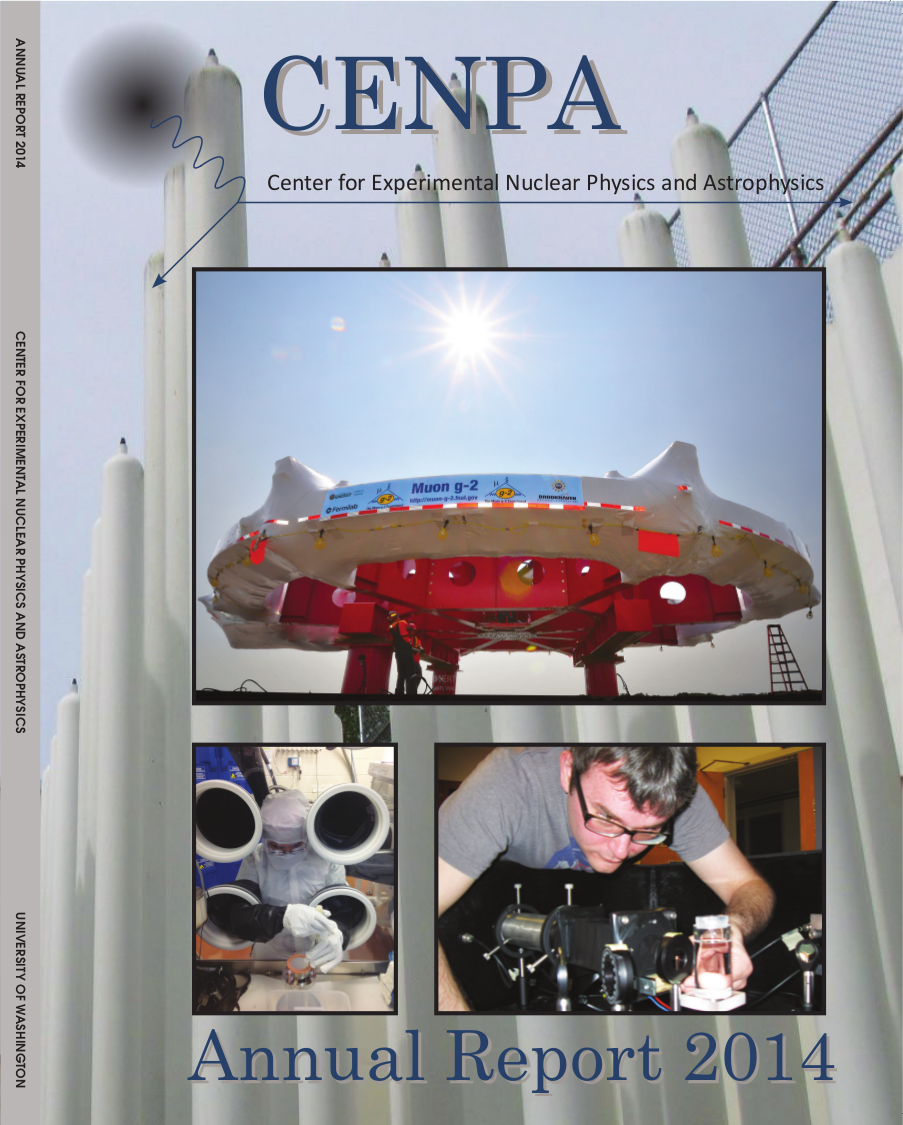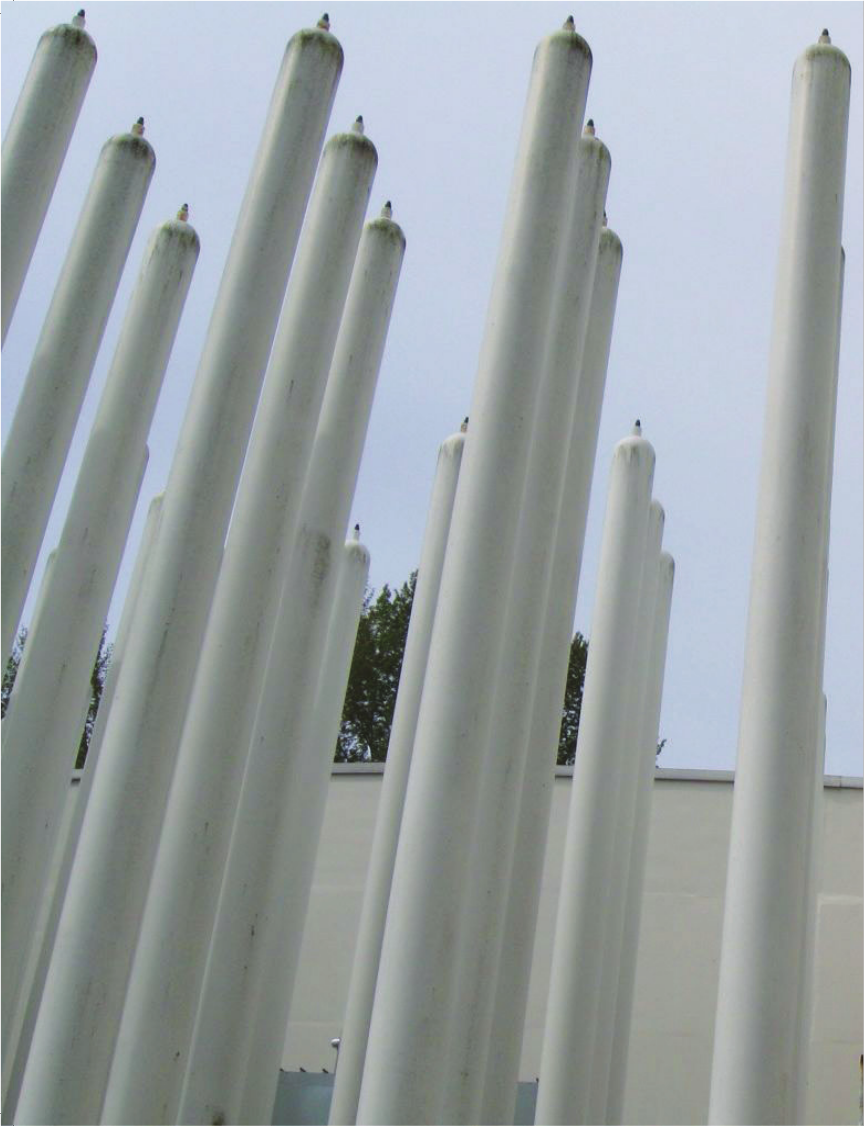Annual Report File:
Description:
ANNUAL REPORT
Center for Experimental Nuclear Physics and Astrophysics
University of Washington
April, 2014
Sponsored in part by the United States Department of Energy under Grant #DE-FG02-97ER41020.
This report was prepared as an account of work sponsored in part by the United States Government. Neither the United States nor the United States Department of Energy, nor any of their employees, makes any warranty, expressed or implied or assumes any legal liability or responsibility for accuracy, completeness or usefulness of any information, apparatus, product or process disclosed, or represents that its use would not infringe on privately-owned rights.
INTRODUCTION
1 Neutrino Research
KATRIN
1.1 Overview of the KATRIN experiment
1.2 Status of the KATRIN experiment
1.3 Analysis tools
1.4 Detector performance during SDS-I commissioning
1.5 System upgrades and changes to the detector system
1.6 Si wafer tester
1.7 Final state distribution workshop
1.8 Update on the Tritium Recoil-Ion Mass Spectrometer
MAJORANA
1.9 Overview of the MAJORANA DEMONSTRATOR
1.10 Construction of the MAJORANA DEMONSTRATOR Prototype Cryostat
1.11 Simulations and analysis activities for the MAJORANA DEMONSTRATOR
1.12 Low-background cable connectors for MAJORANA
1.13 High-voltage cable and vacuum feedthrough flange testing
1.14 Preamplifier with forward-biased reset for CoGeNT and MAJORANA
1.15 Low-background parylene coating and gasket production
SNO+
1.16 Overview of the SNO+ experiment and CENPA’s contribution
1.17 Measurement of light scattering in liquid scintillators considered for SNO+
HALO
1.18 The HALO supernova detector
Project 8
1.19 Status of the Project 8 neutrino mass experiment
2 Fundamental symmetries and non-accelerator-based weak interactions Torsion-balance experiments
2.1 New-Wash rotating torsion balance upgrade
2.2 Parallel-plate inverse-square-law test: data analysis
2.3 Progress on the upgrade of the wedge-pendulum experiment for testing short-range gravity
2.4 Continued development of a low-drift gravity-gradiometer system
2.5 Progress on the development of a ground-rotation sensor for advanced LIGO
2.6 Final data and preliminary results from a search for short-range spin-coupledforces
2.7 Constraints on long-range, macroscopic spin-dependent forces
2.8 Developments towards a hydrogen-rich equivalence-principle test
2.9 Improved limits on long-range parity-odd interactions of the neutron
Non-accelerator-based weak interactions
2.10 The 199 Hg electric-dipole-moment experiment
3 Accelerator-based weak interactions
3.1 Progress towards a precision measurement of the β − ν correlation in 6He β decay
3.2 6He source developments for the β − ν angular correlation experiment
3.3 Magneto-optical trap status and experimental study of related systematic effects for the 6He experiment
3.4 Development of Monte Carlo simulation and systematic analysis for the 6He
experiment
3.5 Limits on tensor-type weak currents from nuclear and neutron β decays
3.6 A high-voltage divider for measuring shakeoff electrons from 6He β decay
3.7 Detector development for the 6He experiment
4 Precision muon physics
4.1 Overview of the muon physics program
g−2
4.2 Overview of the g−2 experiment
4.3 Progress overview of the UW field team for the muon g−2 experiment
4.4 PbF2 calorimeter with SiPM readout
4.5 Software developments and systematic error studies
4.6 Further development of the stationary proton nuclear magnetic resonance array
for the muon g−2 experiment
4.7 Optimizing injection efficiency
4.8 Contribution to the muon anomalous magnetic moment from Belle cross section measurements
4.9 PbF2 calorimeter at SLAC
4.10 PbF2 calorimeter systematics study
4.11 Frequency extraction studies on free induction decays
4.12 Magnetic footprint measurements of SiPM electronics
MuSun
4.13 Overview of the MuSun experiment: Muon capture on deuterium
4.14 Cryogenic preamplifiers
4.15 New TPC construction at UW
4.16 Lifetime analysis of the 2011 data
4.17 Monte Carlo framework and studies
AlCap
4.18 Charged-particle emission after muon capture, the AlCap experiment
5 Axion searches
ADMX
5.1 Status of the ADMX experiment
6 Relativistic Heavy Ions
6.1 UW URHI program overview
6.2 Trigger-associated analysis of 200-GeV proton-proton collisions
6.3 Partitioning p-p FF ensembles to trigger and associated components
6.4 Trigger-fragment vs jet-energy conditional distributions
6.5 Predicting the p-p hadron TA hard component from p-p FFs
6.6 Universal model for jet (parton) energy spectra from p-p collisions
6.7 p-p jet spectrum collision-energy systematics
6.8 Predicting the hadron spectrum hard component for p-p collisions
6.9 E t production vs constituent quarks in RHIC Au-Au collisions
6.10 A TCM description of Au-Au minimum-bias distributions on n ch
6.11 Energy dependence and fluctuations in minimum-bias distributions
6.12 Collision energy dependence of mean p t in high-energy p-p collisions
6.13 Mean p t systematics for p-Pb and Pb-Pb collisions at the LHC
7 Other research
7.1 Status of nonlocal quantum communication test
7.2 Analysis of a wedge quantum interferometer
8 Education
8.1 Use of CENPA facilities in education and course work at UW
8.2 Accelerator-based lab class in nuclear physics
8.3 Radiochemistry and nuclear-chemistry education program in the UW Department of Chemistry
8.4 Student training
9 Facilities
9.1 Facilities overview
9.2 Van de Graaff accelerator and ion source operations and development
9.3 Laboratory computer systems
9.4 Electronic equipment
9.5 Rapid prototyping and fabrication tools
9.6 CENPA instrument shops
9.7 Building maintenance and upgrades
10 CENPA Personnel
10.1 Faculty
10.2 CENPA External Advisory Committee
10.3 Postdoctoral Research Associates
10.4 Predoctoral Research Associates
10.5 NSF Research Experience for Undergraduates participants
10.6 University of Washington graduates taking research credit
10.7 University of Washington undergraduates taking research credit
10.8 Visiting students taking research credit
10.9 Professional staff
10.10 Technical staff
10.11 Administrative staff
10.12 Part-time staff and student helpers
11 Publications
11.1 Published papers
11.2 Invited talks at conferences
11.3 Abstracts and contributed talks
11.4 Papers submitted or to be published
11.5 Reports and white papers
11.6 Book Publications
11.7 Collaborations
11.8 Ph.D. degrees granted
Cover:


